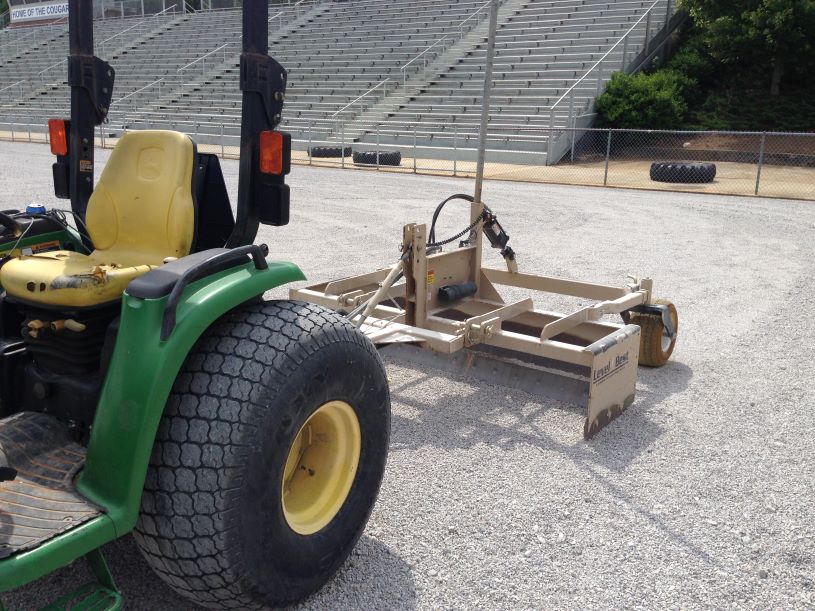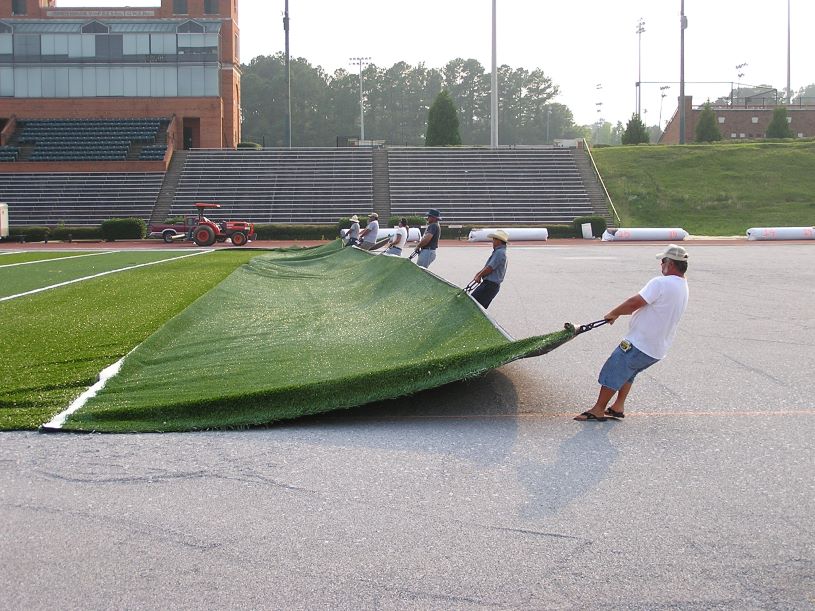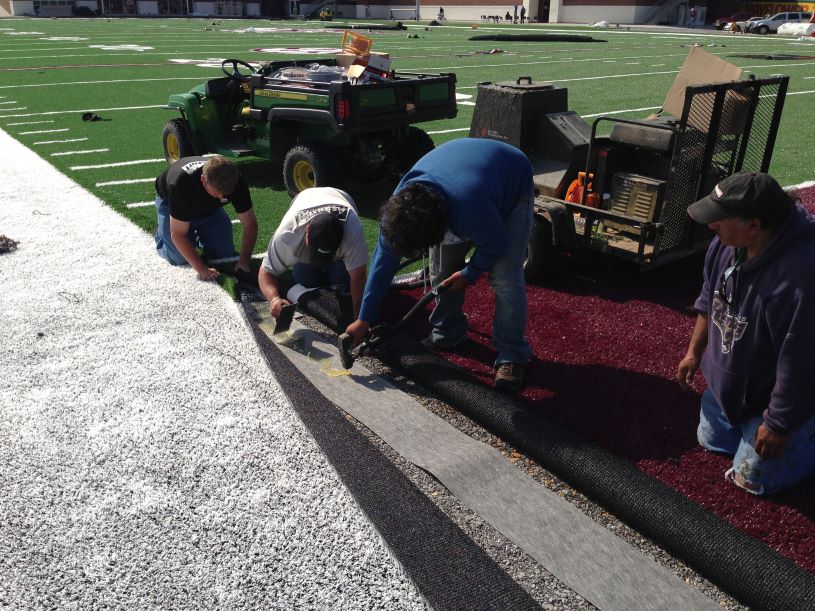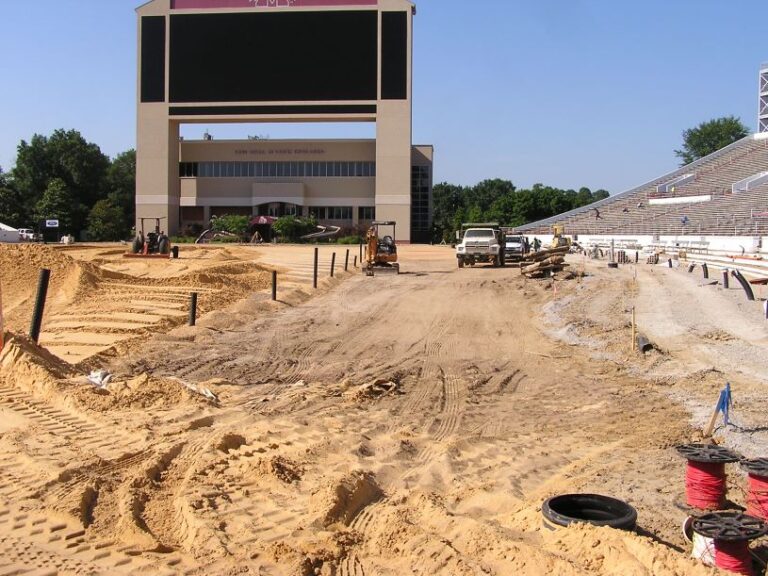By Mary Helen Sprecher
The organization where you work has decided to add a new field. That’s a great thing. What comes next? Often, the answer is confusion. You have an extensive knowledge of fields and their management and a great understanding of the care and maintenance of the different varieties and cultivars. But when it comes to the actual design and construction phase, getting off the starting block can be difficult.
Compounding the confusion is the fact that you may be dealing with multiple user groups – coaches, athletes, officials, school administrators, trainers, managers of travel tournaments, maybe even community members and parents – and they all want their opinions taken into consideration.
The best place to start is at the beginning. Compile a list of what you know about the upcoming project. You can accomplish that by creating an outline that answers these questions:
- How much land is available?
- Is that land likely to be turned into one sports field or several? If so, for which sport(s)?
- What level of play will it host, or will that vary?
- Will it host practices, games or both?
- Will the field be used only during one or two seasons, or do you expect it to be hosting sports year-round?
- Has the organization decided upon a specific type of grass or turf, or is there some flexibility?
- If the surface is natural grass, will play be rotated among several fields so that this field gets to rest between periods of heavy use?
- Do you expect any non-sports activities to be hosted there, such as fairs, graduations, marching band practices, etc.?
- What amenities will be needed for the new field (i.e., bleachers, lighting, irrigation, team seating areas/dugouts, parking, etc.)? Will you want the field built and all amenities installed together, or do you expect to build in phases?
- Is there an electrical or a water supply at the site already?
- Will there be a running track around the field?
- What is the overall budget for the project?
- How accessible is the site for operators of construction equipment?
- Has a feasibility study been performed by a consultant? (Such data can be useful in helping to illuminate user preferences, as well as site capabilities.)
All these answers will help provide some direction for you, and for the professionals with whom you’ll be working (more on that later).

Next, make a list of the things you already know about your own facility (this, at least, is easier to answer):
- What is your climate like?
- What is the soil like?
- What type of grass (or turf, or both) do you have?
- What are your maintenance capabilities?
- How involved is the field owner in decision making for the facility?
- Who is your general clientele? Do you see more travel tournaments, youth sports leagues, high school play, college teams, or something else?
- What is the facility’s overall schedule like? When is it busiest and why?
The next step is to take into consideration the priorities of the user groups. That might sound almost overwhelming since so many people are eager to weigh in.
John Schedler of Baraka Sport recommends getting groups together for discussion at the outset of the project. This can be accomplished through a virtual meeting and may be more orderly if groups are given a deadline and asked to submit their questions and requests via email.
“You want to avoid having too many chefs in the kitchen,” said Schedler. “Have a single meeting to gather the information and then reduce the input and noise.”
Once the larger group has had a chance to voice its opinion, Schedler advises creating a team of only those who should be giving direct input during the project. That group can study the requests of the larger group and prioritize accordingly.
“It’s easier to make smart decisions based on input from your much smaller group,” he said. “Usually, that group is limited to you, a coach or two and one or more experienced professionals in design and construction. There are many owners who have to realize that you cannot please everyone. Decisions have to be made based on your expectations, use and maintenance capabilities and especially based on expert advice regarding what can and cannot be done.”

If you have previously worked with a design professional and/or a skilled sports field builder, reach out to those individuals or their companies. If you do not have any current records of such personnel, it is best to avoid doing a random web search (which could have equally random results in terms of the quality of companies found). A better option is to use the “Find a Member” feature on the website of the American Sports Builders Association (www.sportsbuilders.org). The feature is available at no cost and allows the user to select by state or to use keywords (such as soccer field or baseball field) when narrowing down the search.
According to Mike Munie of Perfect Play Fields & Links, having knowledgeable professionals is key to the success of the project.
“A significant percentage of new fields are not properly thought through during the design and construction phase,” Munie said. “A great field starts with a good framework. If possible, select a site that will accommodate the field, required parking, and any other amenities that could be desired or needed in the future.”

Parking, though not a direct part of field construction, is critical to the user-friendliness of a facility, and contributes greatly to users’ decisions on whether to return. It is necessary to have adequate parking; and, with a new field being added, thought will have to be given to the fact that larger events will be possible, which means more people coming in for games and tournaments.
Perform a parking audit of your current facility. What is parking like on its busiest days? If lots are already full at those times or if people are parking in areas such as adjacent neighborhoods or on streets because there’s no space, you’ll need to take that into consideration and plan for extra parking. Otherwise, you’ll hear complaints.
Find out, too, whether any sidewalks or paths need to be created leading to the new field. Make a note to add signage once the field is complete so that players who are new to the complex can locate the field where they will be playing. And, of course, work with your field contractor to order any sports equipment (goals, batting cages, etc.) well in advance to avoid backlogs or delays.
At the same time, do an audit of your field maintenance equipment since its workload will increase with the addition of a new field. It may be time to tune up, upgrade or even replace heavy equipment if it is getting older and might not stand up to the extra mileage. If extra storage space is needed for new equipment, this is a good time to get started on that project as well.
Facing a new design and construction project can be daunting but with a solid team of skilled professionals, the finished product will be worth it.
Mary Helen Sprecher wrote this on behalf of the American Sports Builders Association (ASBA). Information on design, construction, amenities and accessories for sports facilities can be found in the ASBA publications Sports Fields: A Construction and Maintenance Manual and Running Tracks: A Construction & Maintenance Manual, as well as on the ASBA website (www.sportsbuilders.org).


